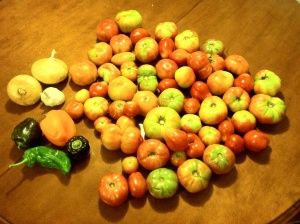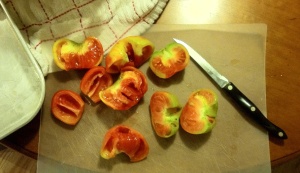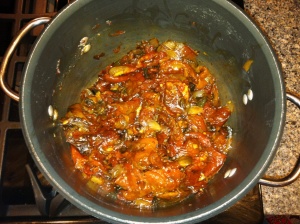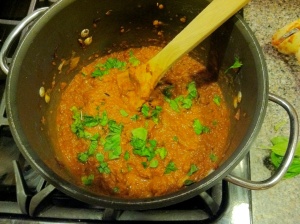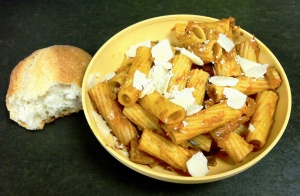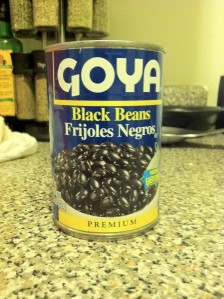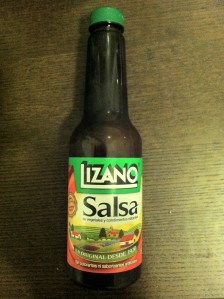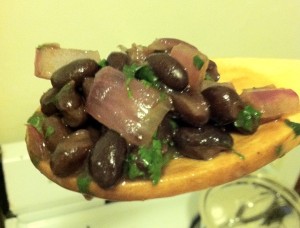A few weeks ago, I waxed romantic about my love for fresh summer tomatoes. Now that August is in full swing, however, those juicy fruits are everywhere. This post is the first in an ongoing series in which I will do my very best to take advantage of the 2011 tomato crop through my favorite application: sauce. Now, I’m not here to offend anyone of Mediterranean descent or take on your grandmother in a cook-off showdown, but I love me some sauce and after cooking pot after pot after pot, I’m not afraid to put my best efforts out there.
For my first attempt, I used my favorite cooking method: roasting. A slow roast both deepens / concentrates the flavor and enhances the natural sweetness of the tomatoes and the accompanying aromatics (onion, bell pepper, and garlic). Admittedly, human error (i.e. going out to shop instead of staying at home to watch the tomatoes) allowed the roasting to continue for a bit longer than I would have normally liked, but the end result gave a sauce that had an extra-deep caramelized flavor and just a touch of dark smokiness (and indeed, a dark color) thanks to a few pieces of charred onion.
At home in Connecticut, I still spent my Saturday morning at the farmer’s market. Lucky for me, there was a man selling second-quality (i.e. cracked / ugly or slightly under-ripe) tomatoes at the rock-bottom price of $10 for a 25 pound box. And not only was he thrilled to sell me those fruits at 40 cents per pound, he even threw in a few purple and one green bell pepper, which also went into the sauce. Supporting local business + fresh local produce + cheap as fuck = all I do is win.
For the actual roasting, prep is easy. Halve the tomatoes, remove the stem (and any undesired parts, such as mold or under-ripe spots) and scoop out the seedy innards with your hand. Do not use a spoon. Spoons are for the weak and the unattractive. Dice the bell peppers and the onion, also removing the seeds from the peppers, and smash / mince some garlic. Load everything into a baking pan, layering the tomatoes on the bottom and the aromatics on top, and slide it all into a 275 degree oven. After a short time, enjoy the wonderful smells permeating your home.
The actual time for the roast depends on how much time you have and what you want out of the sauce. At the very least, let the tomatoes cook for 1.5 hours, which will allow the moisture to cook away and the all of the lovely flavors to concentrate. After that point, though, it’s up to you. I recommend letting everything darken, shrivel slightly, and caramelize / brown around the edges, which should be done within the next hour. Or, if you’re like me, and you get out of the house and leave your mother in charge, things will turn out a bit more well-done than you thought. However, a delicious sauce was still had with little effort.
After everything is out of the oven, put the whole mess into a big pot and over low heat. Again, now you have choices. After already cooking for a few hours, all of the produce should give under the pressure of a wooden spoon and some stiff stirring and will yield a rustic and chunky sauce. This time, however, I wanted something smoother, so i added about a half-cup of water and mixed everything with my stick blender until it was more homogenous, but still had much texture.
Your sauce is now a canvas for finishing. If you let everything roast for a long while, you’ll notice how the natural sugars were brought out and round out the acidity of the tomatoes without any need for added sweeteners. Wanting to bring out some of the alocohol-soluble flavors, I added about a quarter cup of vodka (eyeballed the pour, as I always do with hard liquor, nothing precise) and let the sauce stew for a few minutes. Then, in a stroke of inspiration, I threw in a bit of half and half, wanting to mimic the creaminess and rich flavor of traditional vodka sauces. This also served to brighten the rather dark sauce as well — remember, we eat with our eyes first. Some crushed red pepper and a fresh basil, oregano, and flat-leaf parsley (torn instead of chopped to prevent over-processing the herbs), and I am in a wonderful place. Wait, WHERE IS THE BREAD? Someone get me a loaf of crusty bread!
Ingredients
- 5 – 6 pounds of fresh tomatoes
- 1 large onion
- 1-2 bell peppers
- 2-4 cloves of garlic (or more, if you like)
- 1 tablespoon (or more) fresh basil, torn into small pieces
- 2 teaspoons each fresh oregano and flat-leaf parsley, also torn into small pieces
- 1 teaspoon crushed red pepper flake (at least)
- 1/4 cup vodka
- 1/2 cup half and half (substituting light or heavy cream is fine)
- olive oil
- kosher salt
- fresh black pepper
- water as needed to thin sauce if using stick blender to achieve smooth texture
Procedure
- Wash and dry tomatoes and peppers.
- Halve tomatoes vertically (through the stem). Remove any blemishes, mold, etc.
- Cut out the stem and scoop out the seeds / tomato goo. Don’t worry if the inner membrane comes out too, it’s not as flavorful as the rest of the tomato. Plus, we’ve got a lot of them to get through.
- Dice onion and peppers and mince garlic cloves.
- Arrange tomatoes in baking pan, cut side up, and layer the aromatics on top.
- Drizzle liberally with olive oil and kosher salt.
- Roast in a 250 degree oven for at least 1.5 hours and up to 3 hours, making sure to keep an eye on the progress every 30 minutes or so (15 – 20 minutes closer to the end).
- Place tomatoes and aromatics in a large pot over low heat after the roast. Either stir vigorously to achieve a rustic and chunky texture or use a stick blender for a smoother texture. You can also do this in batches in a standard blender or food processor, but it’s a bit of a hassle working in batches.
- Add vodka and allow to cook for 5 minutes.
- Stir in dairy, season with salt and black pepper if desired.
- Finish with herbs and crushed red pepper.
There will be more sauce to come. Summer is fleeting and the tomatoes, ephemeral jewels that they are, will be ere be gone before I have had my fill.
– Max.

